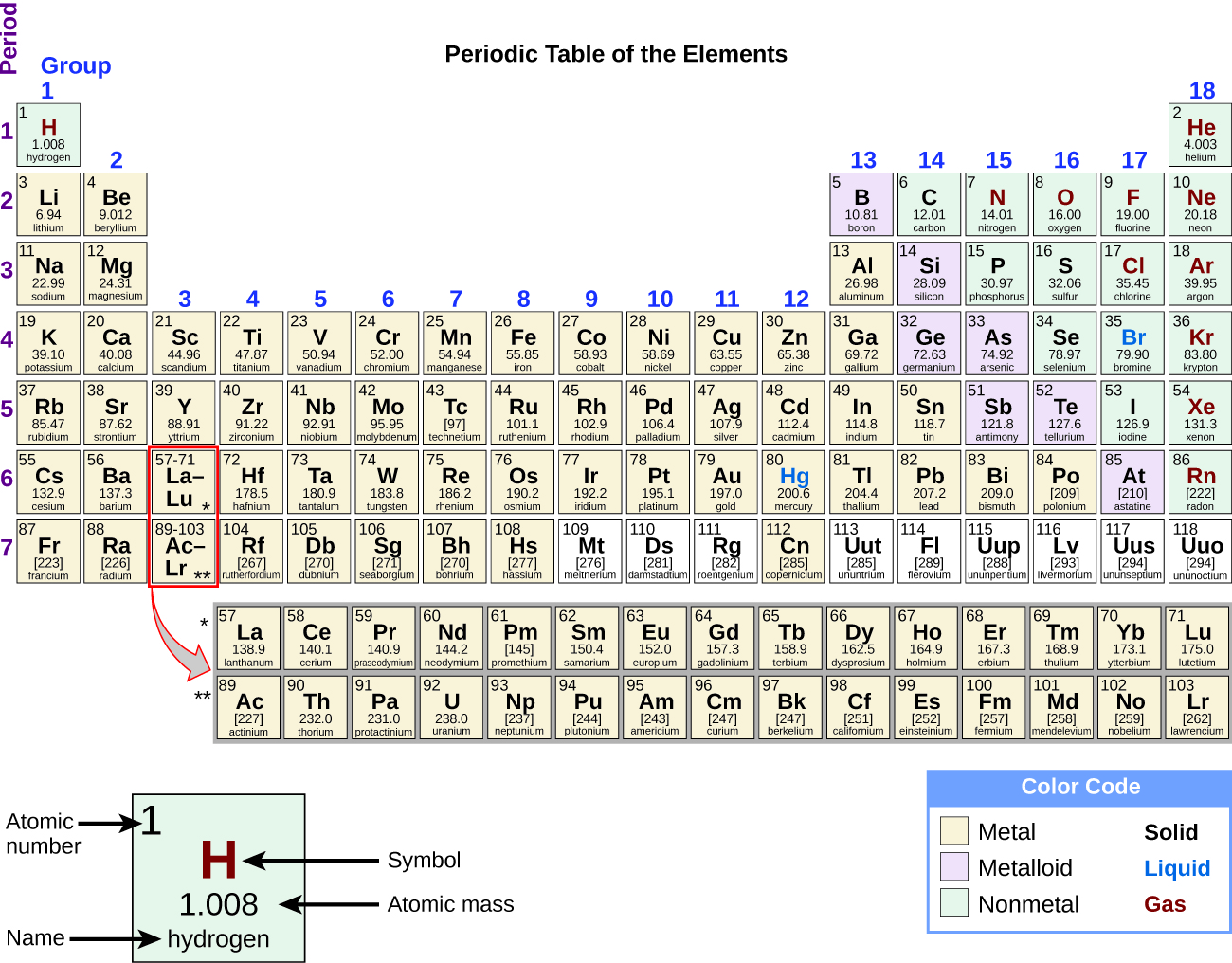| << Chapter < Page | Chapter >> Page > |
Transition metals are defined as those elements that have (or readily form) partially filled d orbitals. As shown in [link] , the d -block elements in groups 3–11 are transition elements. The f -block elements , also called inner transition metals (the lanthanides and actinides), also meet this criterion because the d orbital is partially occupied before the f orbitals. The d orbitals fill with the copper family (group 11); for this reason, the next family (group 12) are technically not transition elements. However, the group 12 elements do display some of the same chemical properties and are commonly included in discussions of transition metals. Some chemists do treat the group 12 elements as transition metals.

The d -block elements are divided into the first transition series (the elements Sc through Cu), the second transition series (the elements Y through Ag), and the third transition series (the element La and the elements Hf through Au). Actinium, Ac, is the first member of the fourth transition series , which also includes Rf through Rg.
The f -block elements are the elements Ce through Lu, which constitute the lanthanide series (or lanthanoid series ), and the elements Th through Lr, which constitute the actinide series (or actinoid series ). Because lanthanum behaves very much like the lanthanide elements, it is considered a lanthanide element, even though its electron configuration makes it the first member of the third transition series. Similarly, the behavior of actinium means it is part of the actinide series, although its electron configuration makes it the first member of the fourth transition series.
(a) cerium(III)
(b) lead(II)
(c) Ti 2+
(d) Am 3+
(e) Pd 2+
For the examples that are transition metals, determine to which series they belong.
(a) Ce 3+ [Xe]4 f 1 ; Ce 3+ is an inner transition element in the lanthanide series.
(b) Pb
2+ [Xe]6
s
2 5
d
10 4
f
14 ; the electrons are lost from the
p orbital. This is a main group element.
(c) titanium(II) [Ar]3
d
2 ; first transition series
(d) americium(III) [Rn]5 f 6 ; actinide
(e) palladium(II) [Kr]4 d 8 ; second transition series
V 5+ is one possibility. Other examples include Sc 3+ , Ti 4+ , Cr 6+ , and Mn 7+ .

Notification Switch
Would you like to follow the 'Chemistry' conversation and receive update notifications?